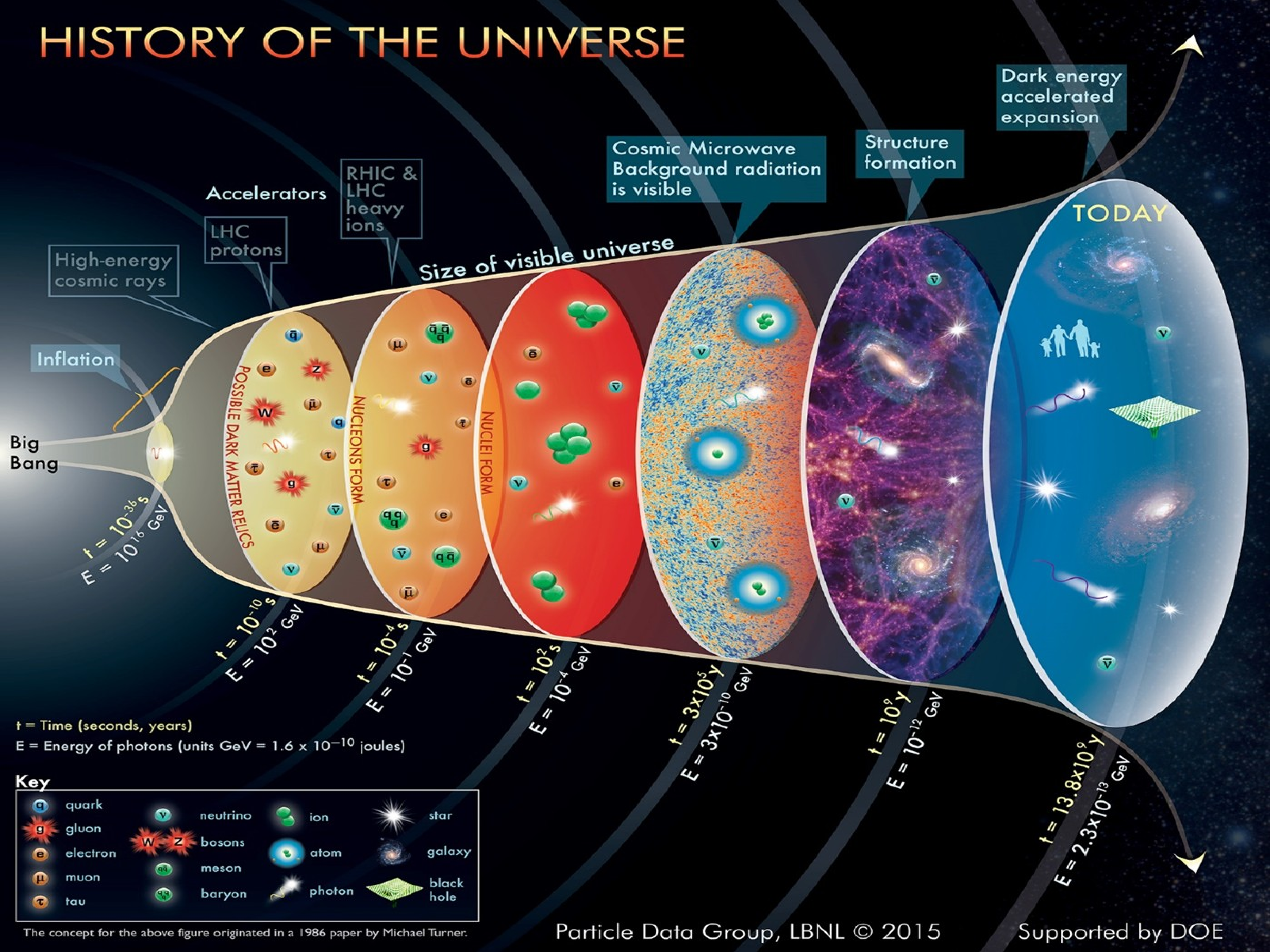Chapter 14 The Universe

1
babytalenti.com/The universe is the entirety of all matter, energy, and space that exists. It includes all galaxies, stars, planets, and other celestial bodies, as well as the space and time in which they exist. The universe is vast, and its size and scale are difficult to comprehend. It is estimated to be about 13.8 billion years old and is constantly expanding [Subsection 14.1.8]. Scientists have used various tools, such as telescopes and satellites, to observe and study the universe, providing insights into its structure, history, and evolution.
According to the prevailing scientific theory, known as the Big Bang theory, the universe began as a singularity, a point of infinite density and temperature, about 13.8 billion years ago Figure 14.0.1. At this moment, the universe underwent a rapid and dramatic expansion known as cosmic inflation. This expansion was driven by a form of energy that caused space to expand at a rate faster than the speed of light, which lasted for an incredibly short period of time. As the universe expanded and cooled, particles of matter and antimatter began to form. However, due to a slight imbalance in the number of particles and antiparticles, the majority of the antimatter was annihilated, leaving behind a small amount of matter to form the universe we observe today. Over time, this matter began to clump together due to gravitational attraction, eventually forming stars, galaxies, and other structures. These structures continued to evolve and interact over billions of years, giving rise to the complex universe we see today. While the exact details of the Big Bang are still the subject of ongoing research, the theory has been supported by a wide range of observations, including the cosmic microwave background radiation and the observed large-scale structure of the universe.
